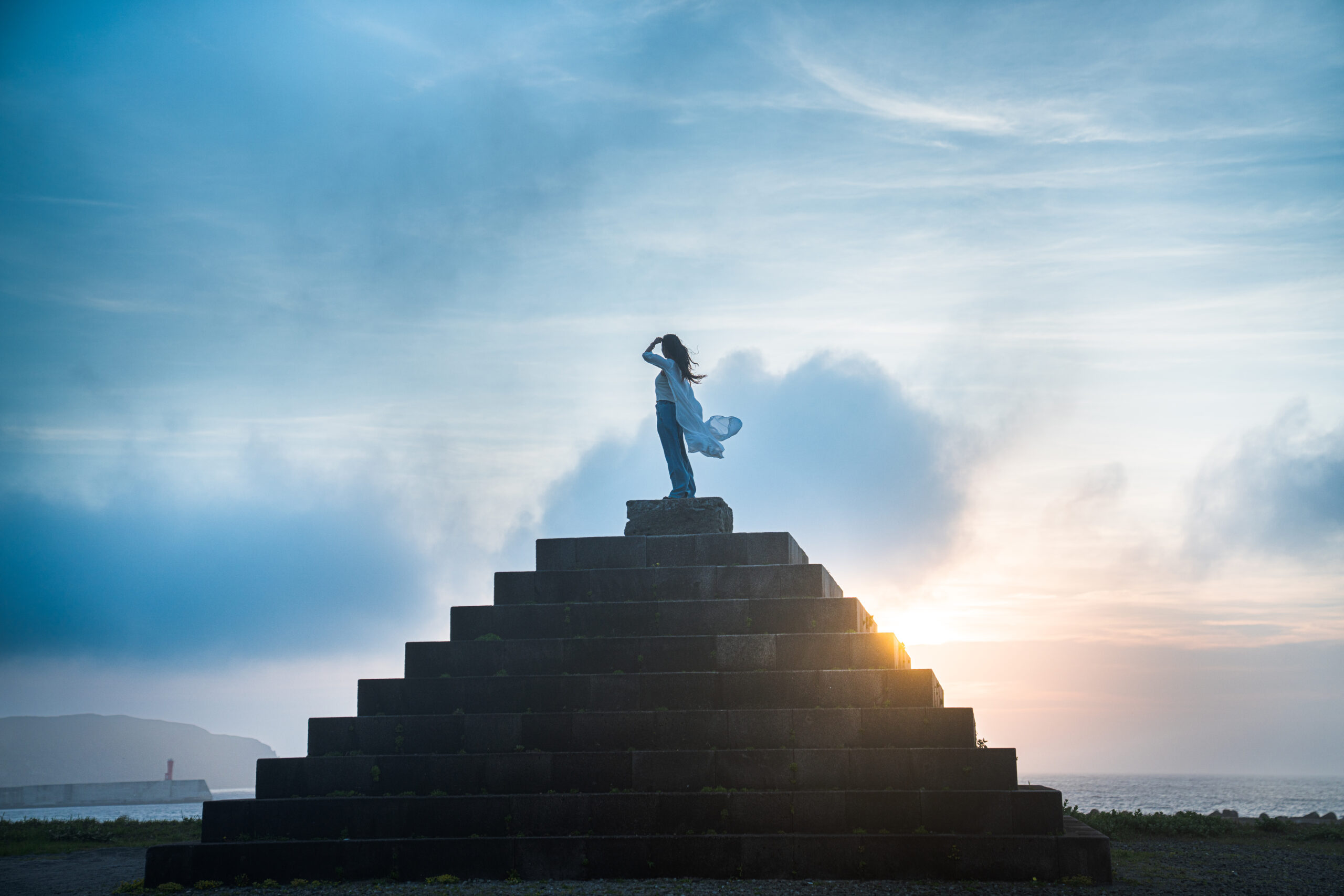
Waves of Inspiration: A Creative Escape to Niijima, Tokyo’s Art Island
With its turquoise waters and long stretches of pristine white-sand beaches, Niijima, the fifth largest of the Izu Islands , has long been a popular destination for surfers chasing the best breaks in the Tokyo island chain. But beyond the surfboards and shoreline lies another side of the island—one shaped by art, craftsmanship, and a rich creative legacy. Scattered across Niijima’s striking natural landscapes are sculptural forms that rise from the earth, blending human imagination with the island’s rugged beauty. So deeply woven into the landscape are these artistic elements that it feels only natural to think of Niijima as Tokyo’s “Art Island.”
Here, visitors can discover what it takes to craft glass from stone by participating in hands-on experiences at the Niijima Glass Art Center , explore parks where water features and stone sculptures coexist, and cycle past open-air galleries that celebrate the island life. Beyond its sun, sea, and surf, Niijima offers a journey into creative discovery where nature doesn’t just inspire—it collaborates.
So whether you’re traveling with a camera in hand, eager to capture moments of beauty, or with a sketchbook ready to fill, Niijima is a place that sparks the imagination and stays with you long after you’ve left. Here are a few recommended ways to make the most of your Niijima adventure.
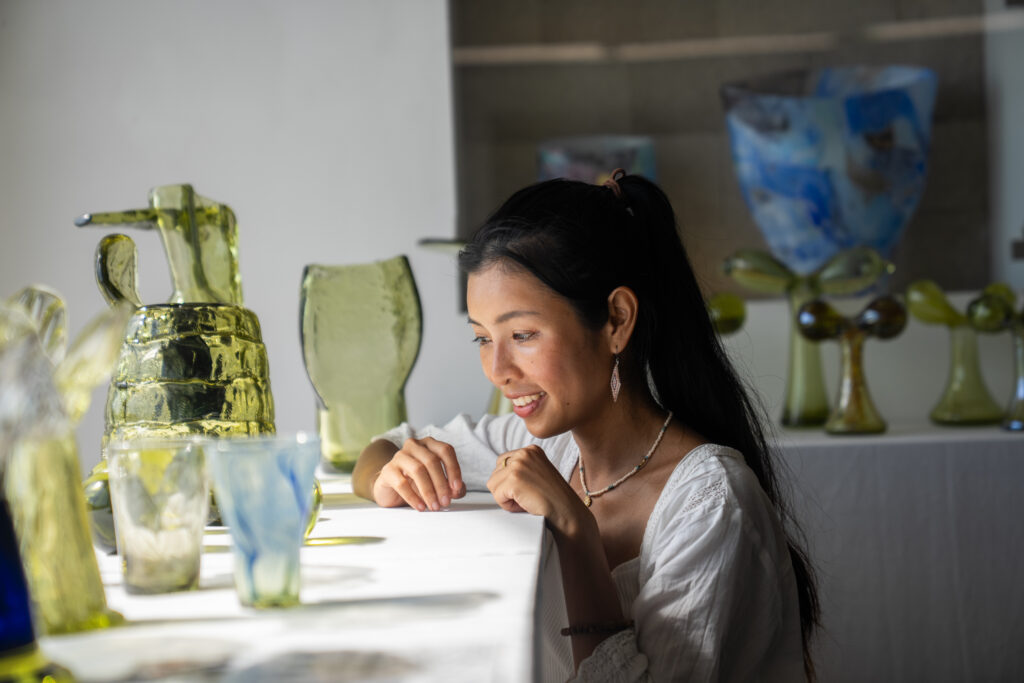
Get Inspired—and Crafty—at the Niijima Glass Art Center
Many of Niijima’s distinctive art structures are made from koga stone, a volcanic material found in only two places in the world: Lipari Island in Italy and Niijima itself. Rich in iron, quartz, and silica, koga stone is ideal for glassmaking, producing an olive-green glass that has become one of the island’s creative hallmarks—and a symbol of its artistic identity.
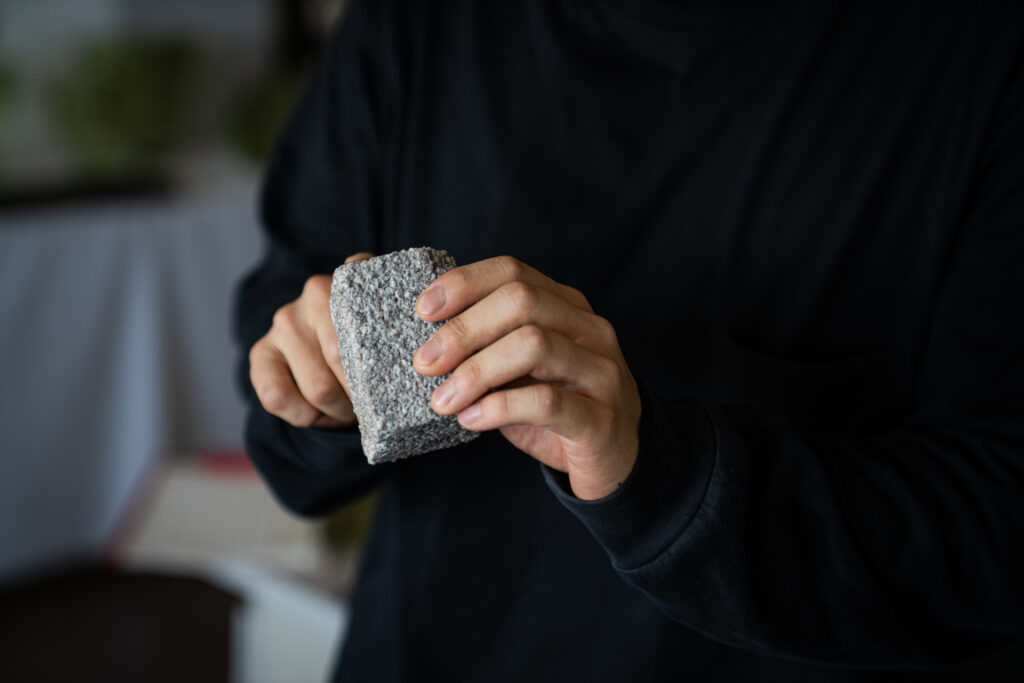
A short five-minute bike ride from Niijima’s main port brings you to the Niijima Glass Art Center, where you can get up close with the beauty and history of koga glass. Founded in 1988 by Japanese glass artists Osamu and Yumiko Noda, the center serves as a creative hub that draws from the island’s volcanic energy while preserving its artistic heritage.
A Niijima native, Osamu studied art at Tama Art University and Illinois State University, dedicating his career to exploring the artistic possibilities of koga stone. Together with his wife Yumiko, a fellow artist, the two envisioned a space where artists from around the world could come together to study, experiment, and create unique works using the island’s natural resources. That vision became the Niijima Glass Art Center. Simultaneously, they also launched the Niijima International Glass Art Festival, an annual competition that attracts glass artists from across Japan and beyond.
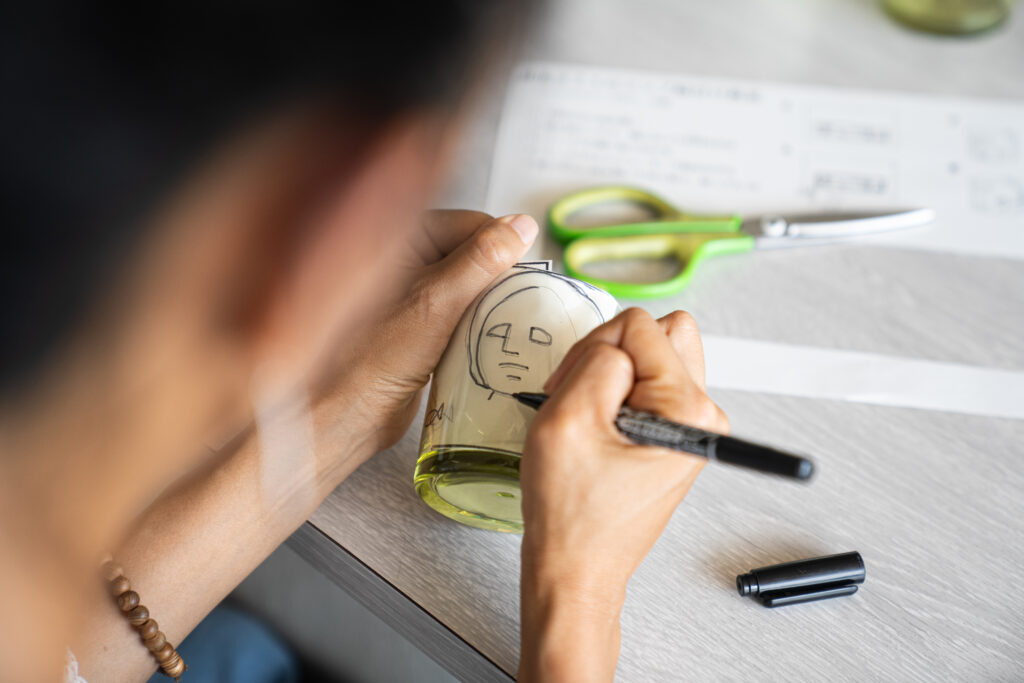
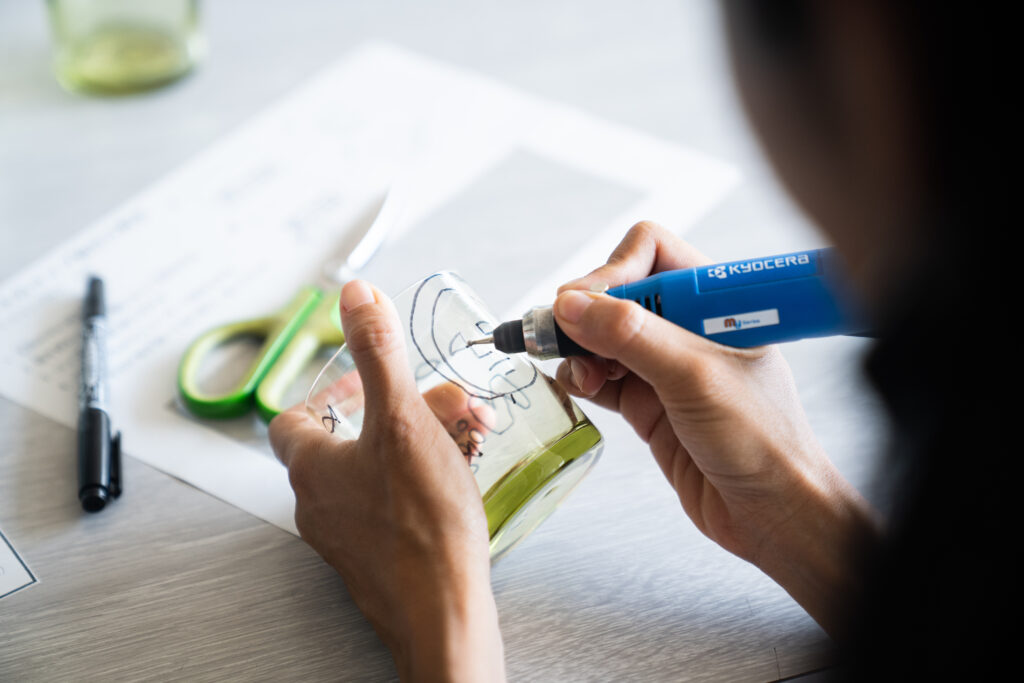
For travelers seeking hands-on creative inspiration, the center offers 40-minute glass-carving workshops three times a day. You’ll begin by sketching your unique design on paper, which is then placed inside a glass vessel and carefully carved from the outside to bring your vision to life. The process is simple, therapeutic, and guided by friendly staff—ideal for both beginners and seasoned creatives. Best of all, you can take your handmade piece home the same day as a one-of-a-kind souvenir.
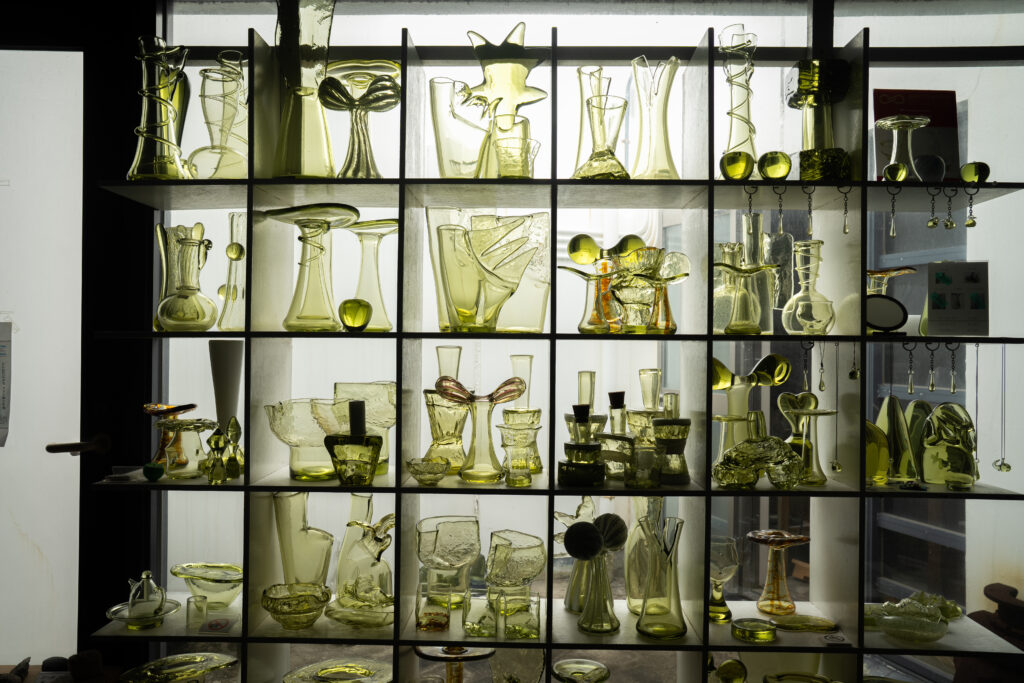
After your workshop, take a moment to explore the center’s diverse glass art displays, featuring many works scattered throughout the grounds. Whether you’re snapping photos or sketching on the spot, you’ll find endless creative inspiration here.
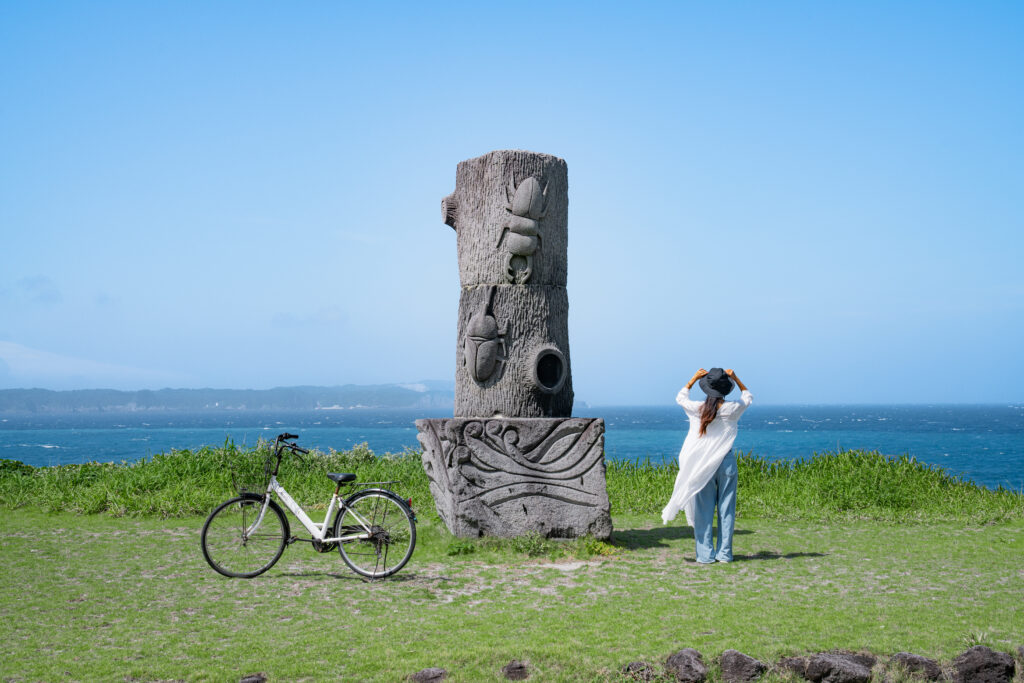
Cycle the Island and Discover Niijima’s Natural Art Landmarks
Once you arrive, it quickly becomes clear: Niijima feels like one expansive open-air museum. Sculptures dot the island, offering unexpected encounters, creative photo ops, and a sense of discovery at every turn. The best way to discover these landmarks is by bicycle, tracing the island’s stunning coastline at your own pace. If you’re short on time, cars are also available, but the leisurely pace of a bike allows you to connect more deeply with the landscape.
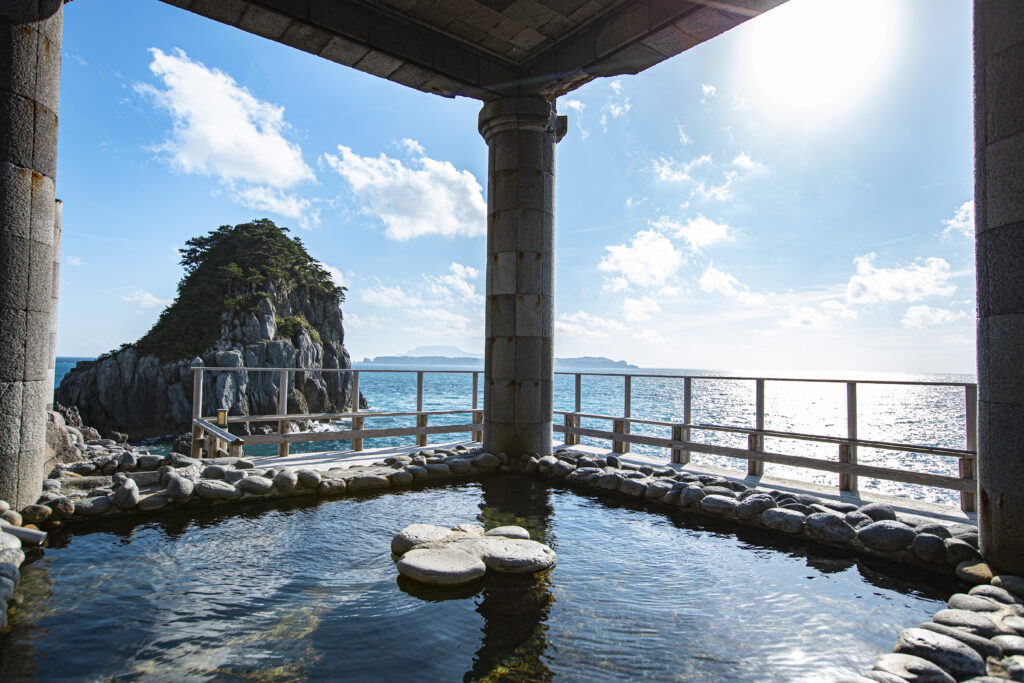
Just minutes from Niijima Port along the Maehama coast, the Yunohama Roten Onsen open-air hot spring blends mythic architecture with seaside serenity. Built from volcanic koga stone and accented with ancient Greek–inspired pillars, the onsen offers panoramic ocean views. The facility features multiple outdoor baths, in which visitors can bathe together in swimwear, as well as a foot bath for quick dips, along with changing rooms and rest spaces. Scattered stone pillars and rock sculptures connect the hot spring’s atmosphere to the island’s geology, creating a tranquil space that is both restorative and visually sculptural—a serene blend of earth, sea, and craftsmanship.
About 5 minutes back on your bike and you’ll reach the famous Borosanbashi, a rugged concrete pier often nicknamed the “rag pier” for its distinctive surface full of holes. Popular at sunset, it’s a favorite gathering place for locals and an irresistible photo stop for visitors, with dramatic coastal views that seem to shift by the minute.
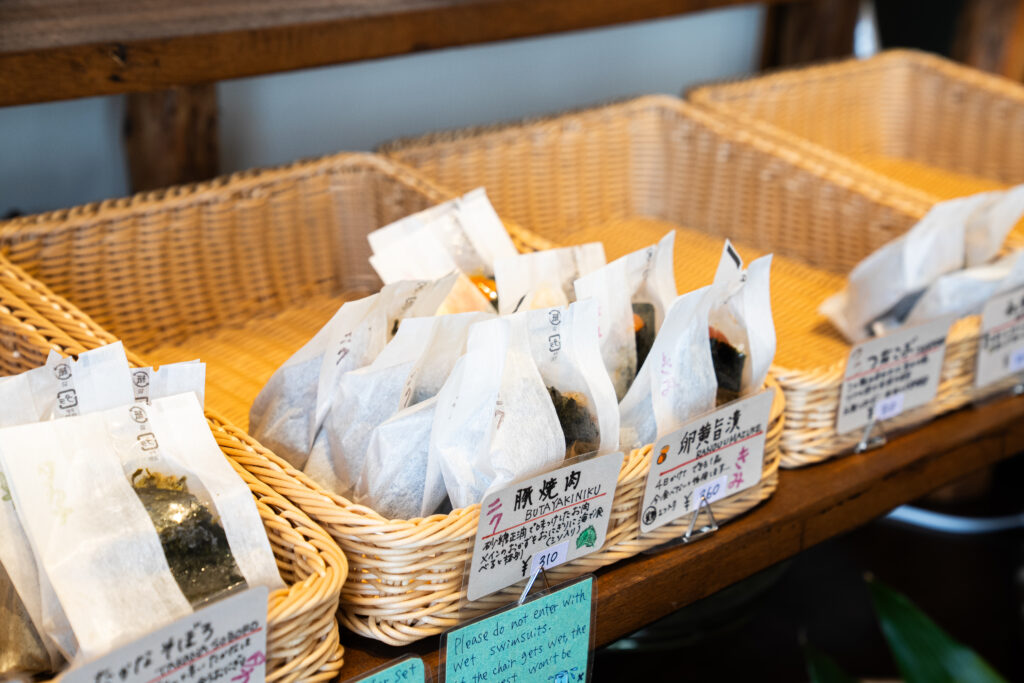
If you get hungry along the way, stop by Mikasa, a cozy eatery known for its onigiri (rice balls) made with local ingredients. You can dine inside or take your meal to go and enjoy it by the seaside while soaking in the island’s peaceful rhythm. Seating is limited, so reservations are recommended if you plan to eat indoors.
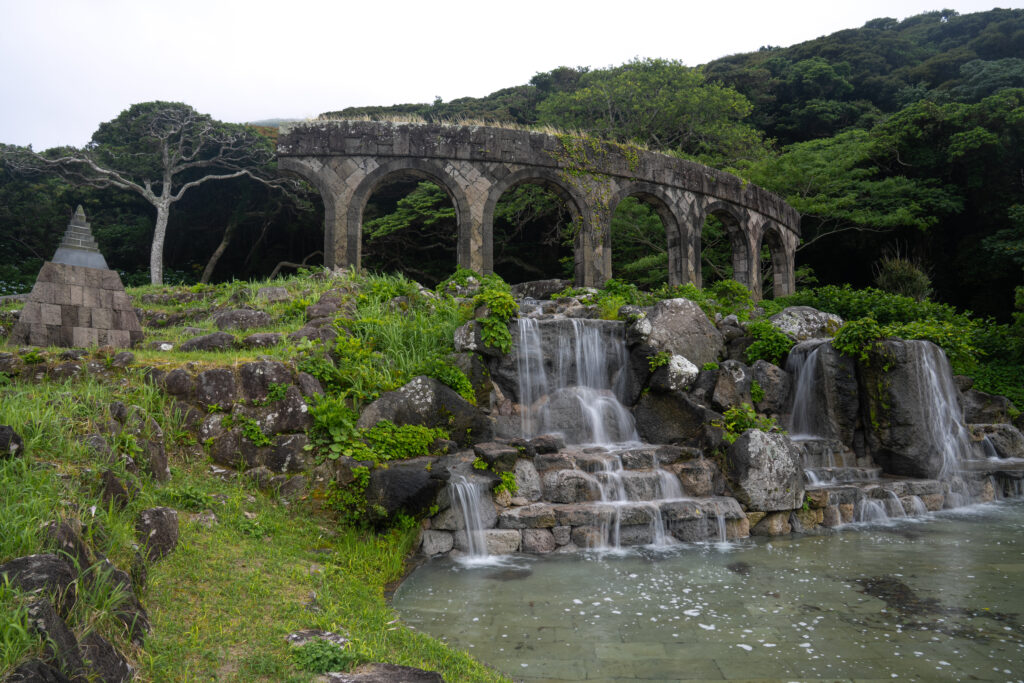
Continue your journey to Niijima Shinsui Park(Niijima Water Park), a lush retreat designed around the island’s natural motifs of stone and water. Centered around a cascading waterfall that feeds into reflective pools, the park echoes ancient Roman water gardens with a modern, volcanic twist. Koga stone sculptures—stylized animals, abstract forms, and playfully carved figures—dot the grounds, creating a whimsical outdoor gallery. With picnic spaces, cycling paths, and open-air structures crafted from local stone, this park blends artistry, nature, and community, a tranquil oasis off the bike path
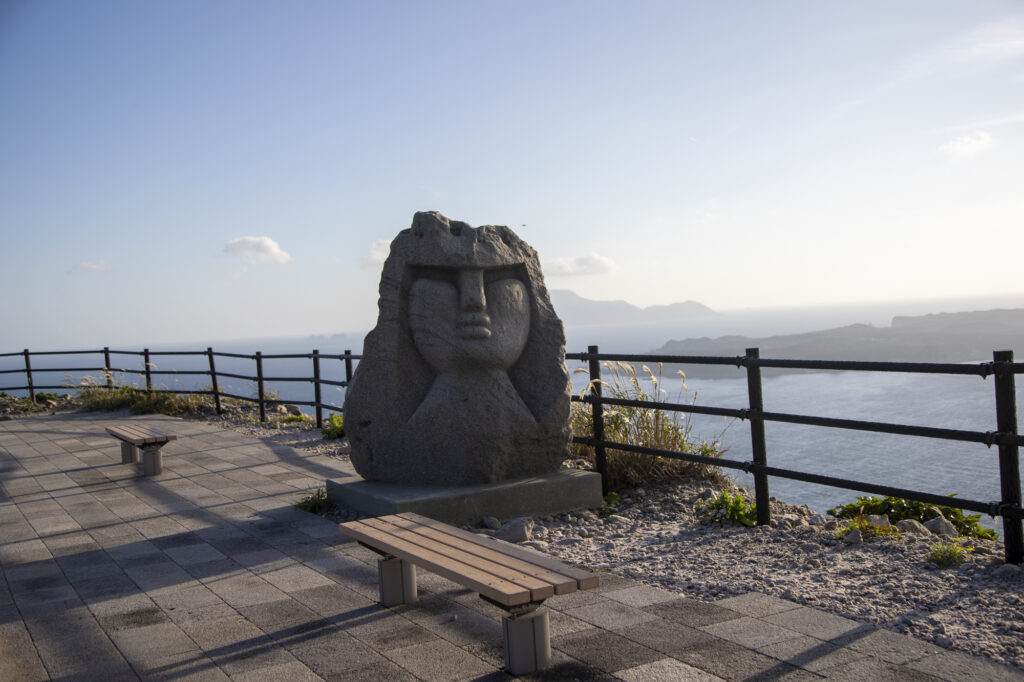
Roughly 30 minutes by bicycle from the park lies one of Niijima’s most iconic sights: the Ishiyama Observation Deck. Set within a former koga stone quarry, this site offers sweeping vistas of Niijima’s coastline and neighboring islets and features large, moss-speckled monoliths and the iconic Moyai (a nod to Easter Island) crafted in the 1960s by local artist Daigo Yuichi to symbolize cooperation and island identity.
The surrounding landscape is dotted with similarly striking faces, each one unique, forming a mysterious sculpture garden atop volcanic roots. As sea breezes sweep ripples across the stone faces under a cobalt sky, Ishiyama becomes a meditative space where art, geology, and the ocean converge in silent dialogue. For photographers, artists, and travelers alike, it’s a must-visit on any Niijima journey.
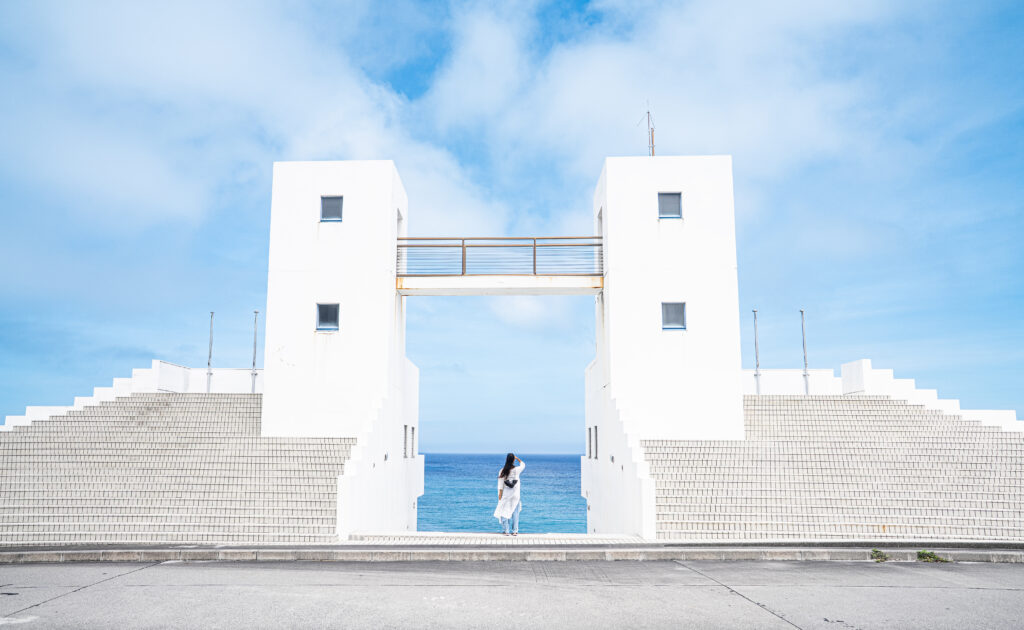
Strike a Pose at Habushiura Shore’s Iconic Gateway
Stretching approximately 6.5 kilometers along Niijima’s eastern coastline, Habushiura Shore dazzles with its pristine white sand and vibrant aquamarine waters. Its surf-friendly waves make it a hot spot for competitions, yet it also offers a mesmerizing backdrop for even the most casual beachgoers.
With vivid hues and open skies, the beach evokes images of Greece’s Santorini—an ideal backdrop for a seaside photo. You’ll spot many fellow travelers striking a pose at the beach’s famous gate, a white gate-like building by the shore, a minimalist landmark that frames the beach and sea beyond it. This striking structure has become an unofficial symbol of the island, with travelers lining up to frame the moment beneath its arch, while the coastline itself continues to serve as a wellspring of inspiration for local artists. Its rhythmic waves, sweeping views, and natural materials are echoed in many of the sculptures found throughout the island.
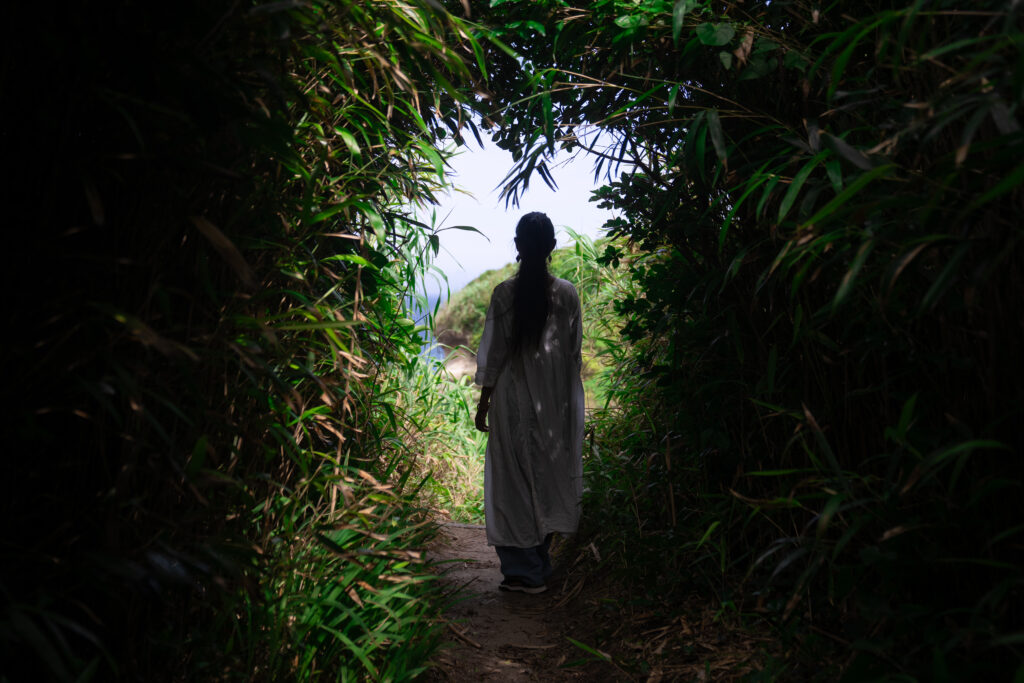
Nearby, you’ll also discover one of Niijima’s best-kept hidden sights: the “Secret” path that leads to a secluded beach of stunning beauty. Hidden behind a narrow farming road that winds through a forested trail, the beach opens up beneath a towering cliff etched with ancient geological layers. The nickname “Secret” dates back to when local surfers used the spot as a quiet escape during peak tourism season —but today, it’s one of Niijima’s most sought-after photo locations. Walk a little farther along the shoreline and you’ll arrive at the island’s famed Shiromama Cliff, a dramatic coastal formation where exposed volcanic strata create a striking visual tapestry. The scenery here feels like a world of its own—a breathtaking sight that lingers in your memory long after you leave the island.
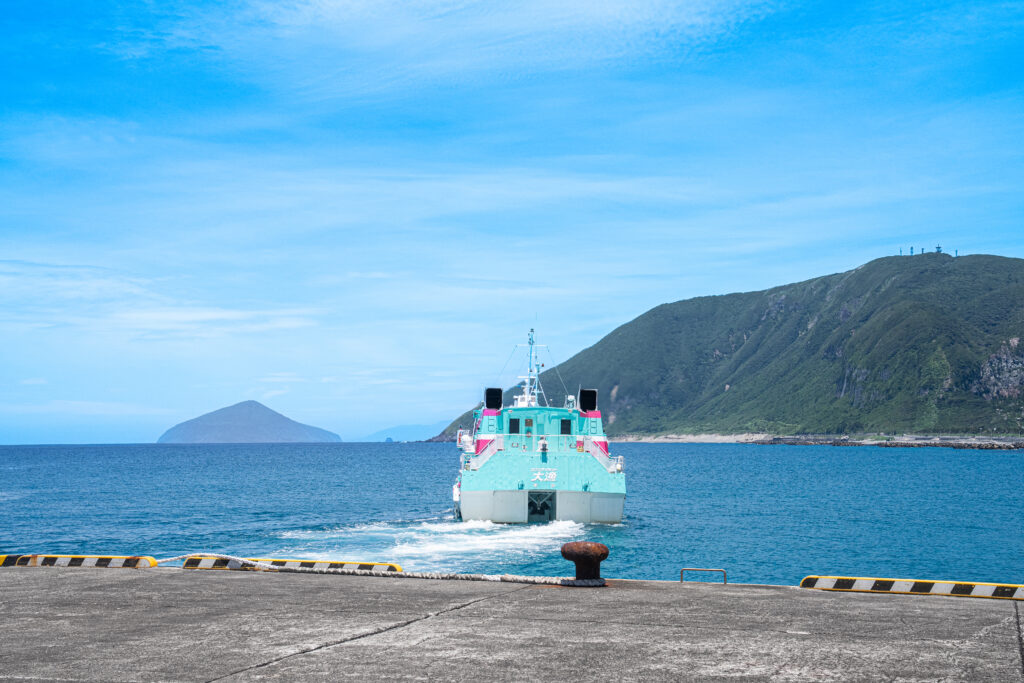
Plan Your Visit: Access & Safety Tips for Niijima
Niijima’s natural richness and quiet charm leave a lasting impact on every traveler. Whether you come for the surf or stay for the sculpture, Niijima is more than just an island—it’s a canvas for creativity, shaped by the sea and carved in stone.
However, due to its remote location and slow-paced island life, a trip to Niijima requires careful travel planning. Here are a few key tips to keep in mind before you go.
Local transportation
Modes of transport on Niijima are limited to bicycles and cars, which can both be rented in the island’s main port area.
Car & Bicycle Rentals
As vehicle options are limited, advance reservations are highly recommended. For bookings and inquiries, please contact each rental provider directly. Note that most services operate primarily in Japanese.
- J Cycle – A rental bicycle store near the Niijima port. Children’s bicycles are also available. Please inquire about prices.
- Maechu Shoten – Offers a variety of rental bicycles, including e-bikes and bikes equipped with child seats.
- S&S Yamazaki – Scooters and bicycle rental. Tandem scooters are available. Please inquire about prices.
- Nakada Motor – Rental car prices start at ¥ 3,300 for 24 hours.
- Morita Rent-a-car – Support with surfboards available.
As availability is limited, it’s best to reserve your rental in advance.
Weather Conditions & Opening Hours
Niijima’s attractions, activities, and transportation services options are heavily influenced by the season and local conditions. Ferry and flight schedules may be delayed or canceled due to high winds, rough seas, or typhoons. Businesses and locations may also close temporarily or operate on reduced hours during off-peak periods, such as Japan’s mid-year rainy season or winter. Please check local weather forecasts and official travel advisories, and confirm hours of operation directly with the facility or through the local tourism office before your visit.
Note that most services operate primarily in Japanese.
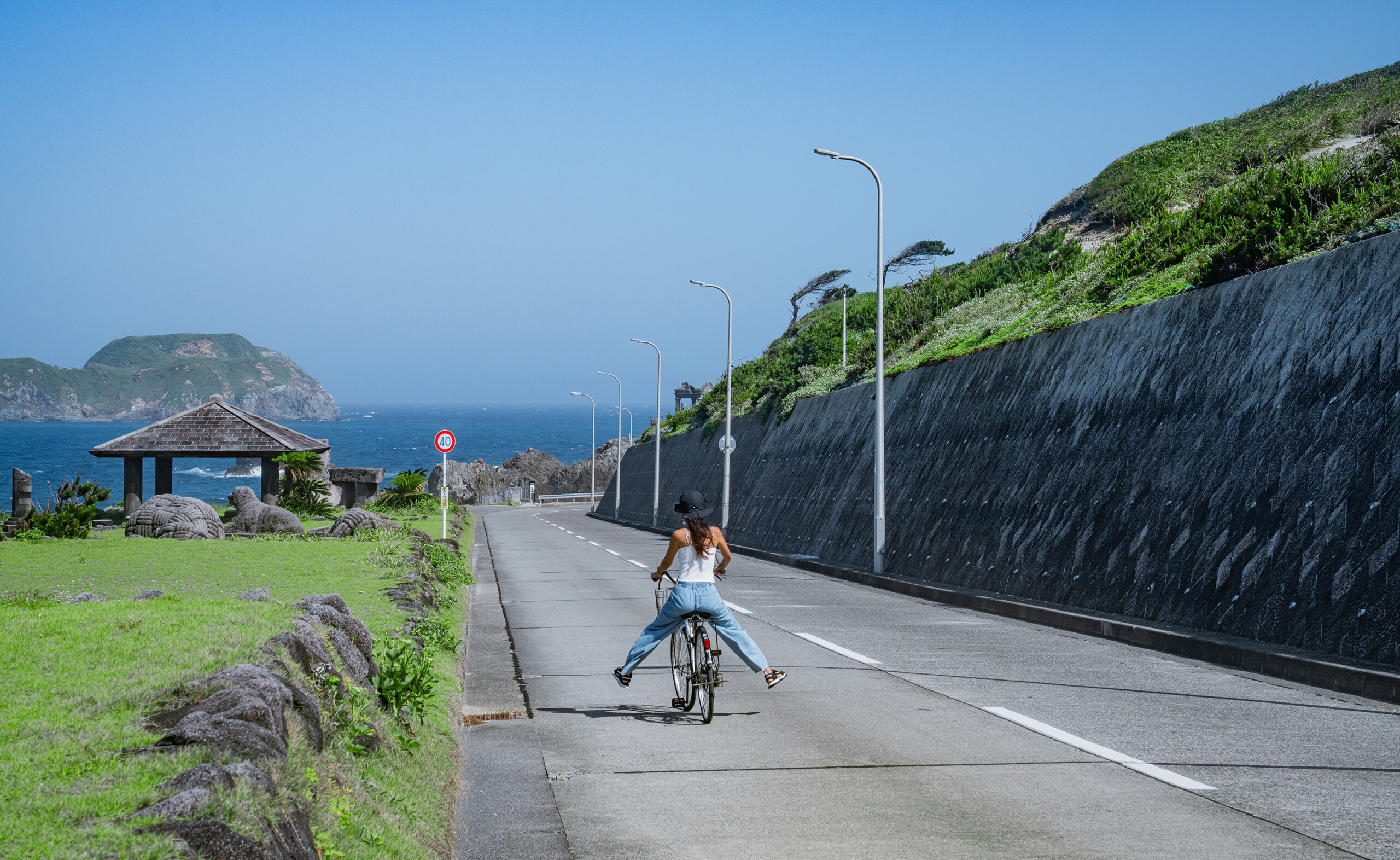
GET TO KNOW Niijima
